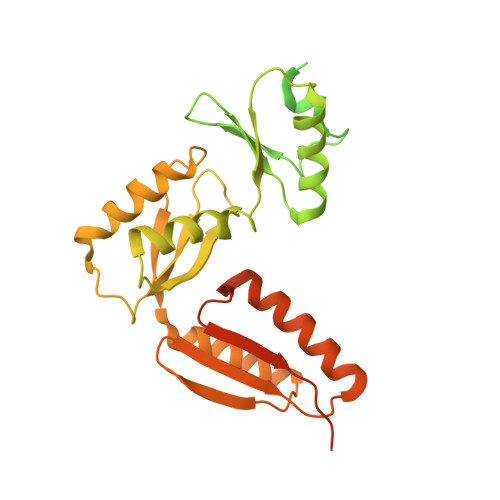High-resolution view of the type III secretion export apparatus in situ reveals membrane remodeling and a secretion pathway.
Butan, C., Lara-Tejero, M., Li, W., Liu, J., Galan, J.E.(2019) Proc Natl Acad Sci U S A 116: 24786-24795
- PubMed: 31744874
- DOI: https://doi.org/10.1073/pnas.1916331116
- Primary Citation of Related Structures:
6UOT, 6UOV - PubMed Abstract:
Type III protein secretion systems are essential virulence factors for many important pathogenic bacteria. The entire protein secretion machine is composed of several substructures that organize into a holostructure or injectisome. The core component of the injectisome is the needle complex, which houses the export apparatus that serves as a gate for the passage of the secreted proteins through the bacterial inner membrane. Here, we describe a high-resolution structure of the export apparatus of the Salmonella type III secretion system in association with the needle complex and the underlying bacterial membrane, both in isolation and in situ. We show the precise location of the core export apparatus components within the injectisome and bacterial envelope and demonstrate that their deployment results in major membrane remodeling and thinning, which may be central for the protein translocation process. We also show that InvA, a critical export apparatus component, forms a multiring cytoplasmic conduit that provides a pathway for the type III secretion substrates to reach the entrance of the export gate. Combined with structure-guided mutagenesis, our studies provide major insight into potential mechanisms of protein translocation and injectisome assembly.
Organizational Affiliation:
Department of Microbial Pathogenesis, Yale University School of Medicine, New Haven, CT 06536.















